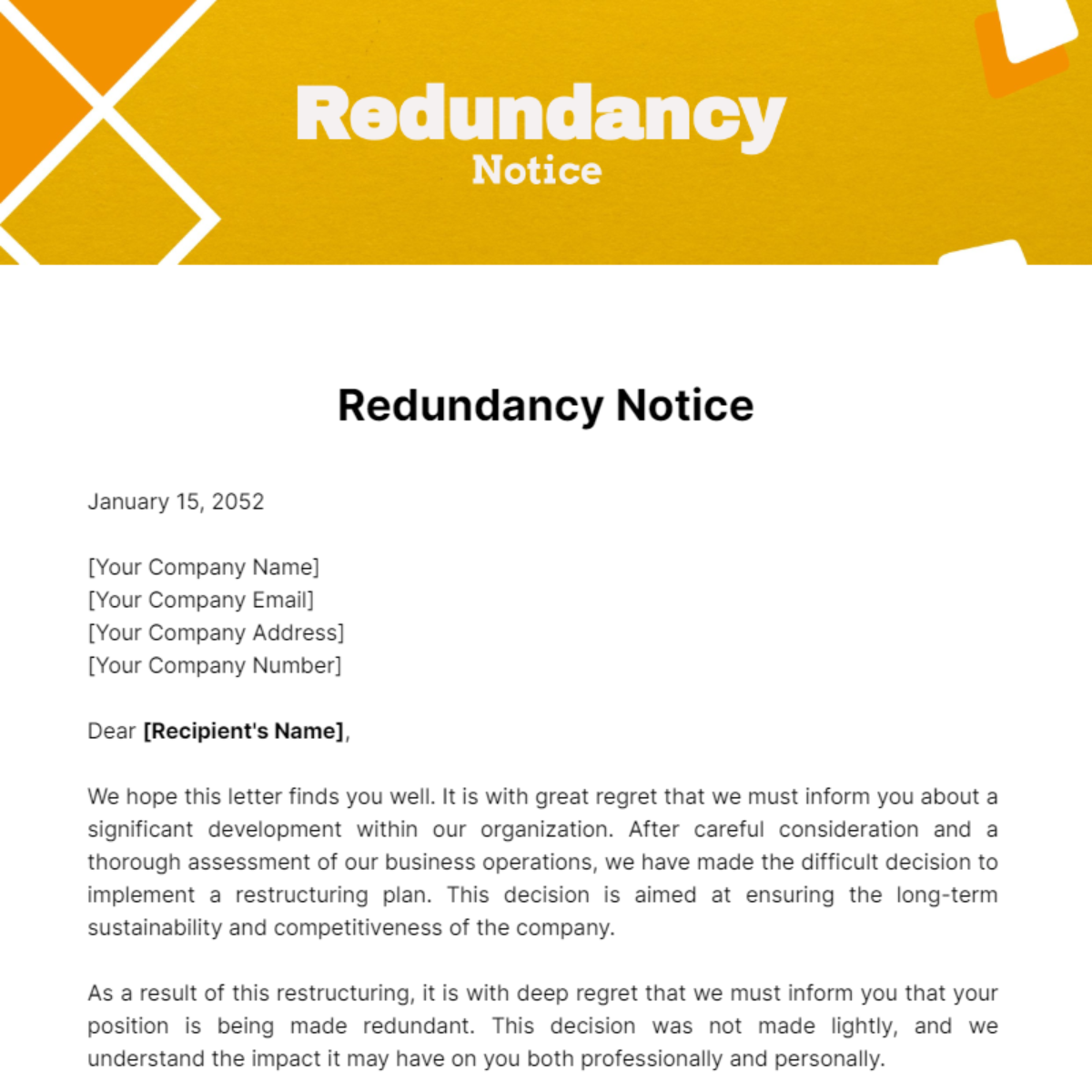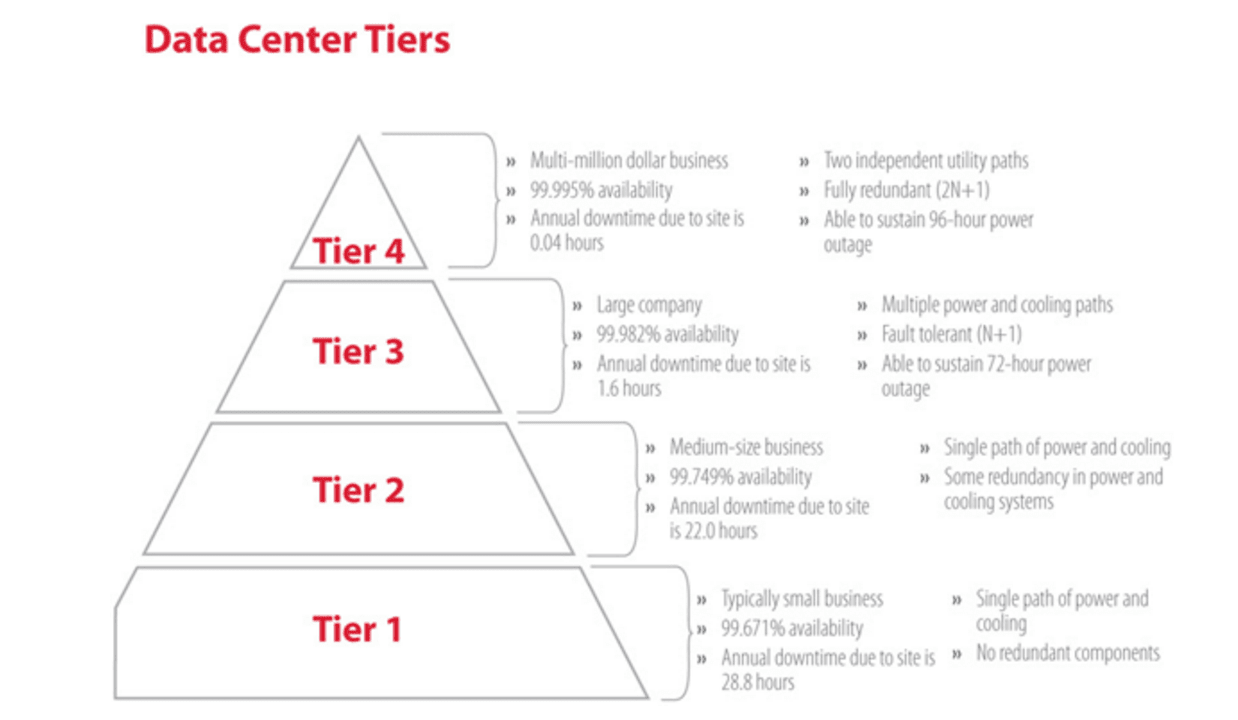Redundancy Pay If Company Goes Bust: Comprehending Your Entitlements in the UK
Redundancy Pay If Company Goes Bust: Comprehending Your Entitlements in the UK
Blog Article
Exploring the Operational Characteristics of Company Redundancy and Its Long-Term Sustainability

Redundancy Strategies for Service Continuity
In order to make certain uninterrupted procedures, organizations need to execute effective redundancy techniques for company connection. Redundancy in this context describes the replication of crucial parts or functions within a system to alleviate the effect of prospective failings. By integrating redundancy approaches, organizations can improve their durability against disruptions triggered by various aspects such as natural catastrophes, devices failures, or cyber-attacks.
One usual redundancy method is the execution of back-up systems and data storage space options. This involves developing duplicates of vital data and systems that can be turned on in instance of a key system failing. In addition, companies can establish repetitive communication networks and source of power to maintain connection and operations throughout unforeseen events.
Moreover, cross-training employees to execute multiple roles within the business can serve as a valuable redundancy approach. If vital employees are inaccessible due to illness or other reasons, this makes certain that vital tasks can still be brought out also. Generally, effective redundancy techniques are essential for organizations to support operational connection and minimize the effect of potential disruptions.
Impact of Redundancy on Organizational Resilience
Provided the crucial duty redundancy methods play in ensuring organization connection, discovering the effect of redundancy on organizational strength becomes imperative for recognizing the holistic functional characteristics of a business. Organizational durability describes an entity's ability to adjust to disruptions, recuperate from problems, and transform when required while keeping core features. Redundancy, when tactically executed, can significantly contribute to boosting an organization's resilience when faced with unexpected challenges. By having back-up systems, personnel, or processes in position, firms can much better endure shocks and continue operations with marginal disruption.
Furthermore, redundancy can reinforce employee morale and self-confidence, recognizing that there are backup plans in position to attend to unanticipated scenarios. This complacency can lead to increased efficiency and a more positive workplace. Additionally, redundancy can foster advancement and creative thinking within a company as staff members feel equipped to take computed threats, knowing that there is a safety and security internet to support them in situation of failing. Generally, the impact of redundancy on organizational strength is extensive, forming the long-lasting sustainability and success of a company.
Stabilizing Effectiveness and Flexibility in Redundancy
Accomplishing an unified equilibrium in between operational efficiency and adaptive flexibility is an essential difficulty in the tactical release of redundancy within companies. Effective procedures are vital for preserving performance and cost-effectiveness, making sure that resources are made use of ideally. However, extreme emphasis on efficiency alone can result in rigidity, making it difficult for companies to adjust to unpredicted modifications or obstacles. On the other hand, versatility enables companies to respond nimbly to evolving conditions, fostering technology and durability. Yet, way too much adaptability without a strong functional structure can cause inadequacies and disparity.
To stabilize performance and flexibility in redundancy planning, companies must thoroughly analyze their operational requirements, market characteristics, and strategic objectives. Executing lean practices can enhance effectiveness by eliminating and streamlining processes waste, while cultivating a culture of adaptability and continual enhancement can improve versatility. Furthermore, purchasing cross-training programs and durable interaction networks can aid cultivate a functional labor force efficient in managing varied tasks throughout periods of change. Ultimately, locating the appropriate balance between performance and flexibility is important for constructing a sustainable and resistant company despite unpredictability.
Long-Term Sustainability With Redundancy Preparation
To make sure long-lasting stability and stability, organizations must strategically align their redundancy preparation with long-lasting sustainability goals, thus balancing functional performance with flexible versatility. Business should see redundancy not as a reactive solution to instant troubles but as a positive technique for long-lasting success.

Aggressive Measures for Sustainable Firm Operations
Just how can companies proactively improve their operational sustainability for lasting success? Implementing positive steps is vital for business aiming to ensure sustainable procedures. One key strategy is to buy modern technology and development to improve processes, decrease waste, and stay competitive on the market. Embracing lasting techniques such as decreasing power consumption, decreasing carbon footprint, and enhancing resource usage can not just benefit the atmosphere however additionally Learn More Here bring about cost financial savings over time.
In addition, promoting a culture of continuous improvement and understanding within the company can improve flexibility to helpful site changing market conditions and consumer demands. Motivating employee involvement in decision-making processes and giving chances for expert advancement can enhance spirits, performance, and general performance. Developing clear objectives, keeping track of essential efficiency signs, and regularly examining progression are important elements of proactive sustainability monitoring.
Working together with providers, customers, and various other stakeholders to promote sustainable practices throughout the supply chain can develop a causal sequence of positive effect - redundancy pay if company goes bust. By taking proactive actions towards operational sustainability, companies can develop resilience, drive technology, and protect their lasting success in an ever-evolving company landscape
Conclusion

In the world of business monitoring, the tactical release of company redundancy stands as a crucial yet complex practice that necessitates a delicate equilibrium in between functional performance and lasting practicality. By dissecting the functional dynamics that underpin company redundancy and assessing its wider ramifications for business durability and adaptability, a nuanced understanding of just how redundancy approaches can form the future trajectory of a firm begins to unfold.Given the important duty redundancy strategies play in guaranteeing company continuity, checking out the impact of redundancy on business resilience comes to be necessary for recognizing the alternative operational dynamics of a business. In general, the impact of redundancy on business durability is extensive, shaping the lasting sustainability and success of a business.
In verdict, comprehending here the functional characteristics of business redundancy is important for guaranteeing long-term sustainability.
Report this page